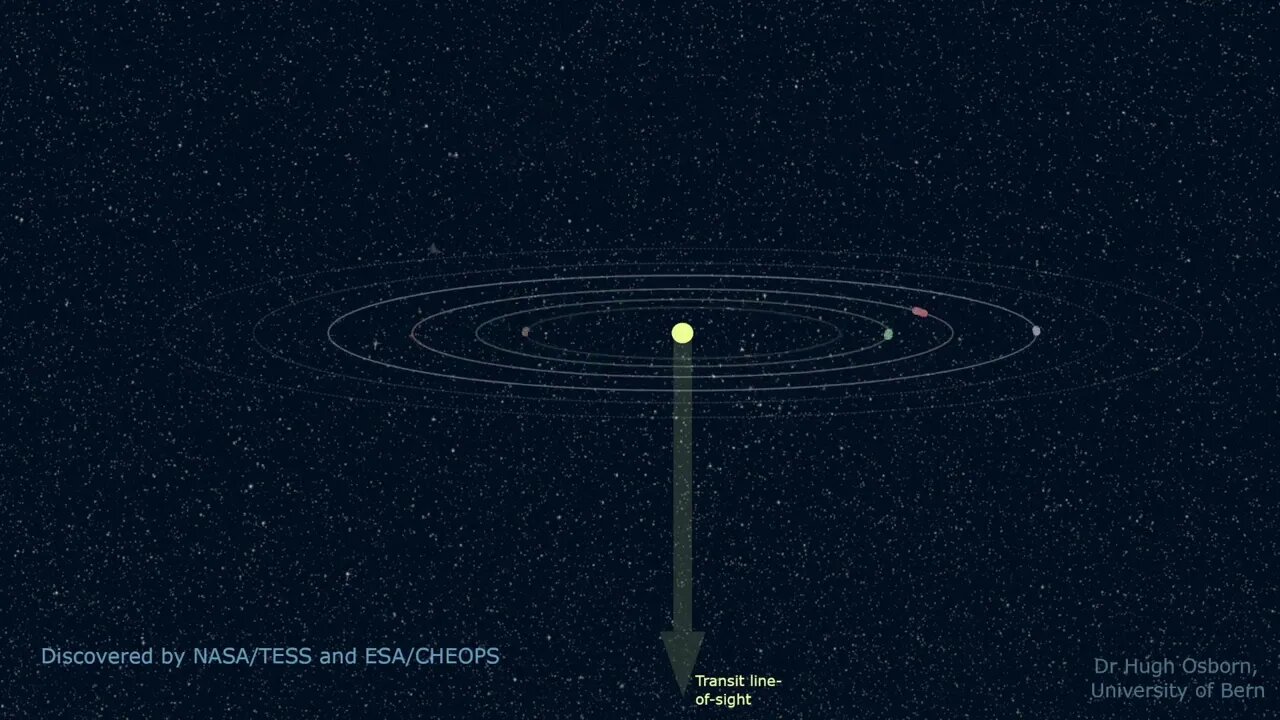Premium Only Content

Discovery Alert: Watch the Synchronized Dance of a 6-Planet System
While multi-planet systems are common in our galaxy, those in a tight gravitational formation known as “resonance” are observed by astronomers far less often. In this case, the planet closest to the star makes three orbits for every two of the next planet out – called a 3/2 resonance – a pattern that is repeated among the four closest planets.
Among the outermost planets, a pattern of four orbits for every three of the next planet out (a 4/3 resonance) is repeated twice. And these resonant orbits are rock-solid: The planets likely have been performing this same rhythmic dance since the system formed billions of years ago. Such reliable stability means this system has not suffered the shocks and shakeups scientists might typically expect in the early days of planet formation – smash-ups and collisions, mergers and breakups as planets jockey for position. And that, in turn, could say something important about how this system formed. Its rigid stability was locked in early; the planets’ 3/2 and 4/3 resonances are almost exactly as they were at the time of formation. More precise measurements of these planets’ masses and orbits will be needed to further sharpen the picture of how the system formed.
Fun facts: The discovery of this system is something of a detective story. The first hints of it came from NASA’s TESS (the Transiting Exoplanet Survey Satellite), which tracks the tiny eclipses – the “transits” – that planets make as they cross the faces of their stars. Combining the TESS measurements, made in separate observations two years apart, revealed an assortment of transits for the host star, called HD 110067. But it was difficult to distinguish how many planets they represented, or to pin down their orbits.
Eventually, astronomers singled out the two innermost planets, with orbital periods – “years” – of 9 days for the closest planet, 14 days for the next one out. A third planet, with a year about 20 days long, was identified with the help of data from CHEOPS, The European Space Agency’s CHaracterising ExOPlanets Satellite.
Then the scientists noticed something extraordinary. The three planets’ orbits matched what would be expected if they were locked in a 3/2 resonance. The next steps were all about math and gravity. The science team, led by Rafael Luque of the University of Chicago, worked through a well-known list of resonances that potentially could be found in such systems, trying to match them to the remaining transits that had been picked up by TESS. The only resonance chain that matched up suggested a fourth planet in the system, with an orbit about 31 days long. Two more transits had been seen, but their orbits remained unaccounted for because they were only single observations (more than one transit observation is needed to pin down a planet’s orbit). The scientists again ran through the list of possible orbits if there were two additional, outer planets that fit the expected chain of resonances across the whole system. The best fit they found: a fifth planet with a 41-day orbit, and a sixth just shy of 55.
At this point the science team almost hit a dead end. The slice of the TESS observations that had any chance of confirming the predicted orbits of the two outer planets had been set aside during processing. Excessive light scattered through the observation field by Earth and the Moon seemed to make them unusable. But not so fast. Scientist Joseph Twicken, of the SETI Institute and of the NASA Ames Research Center, took notice of the scattered light problem. He knew that scientist David Rapetti, also of Ames and of the Universities Space Research Association, happened to be working on a new computer code to recover transit data thought to be lost because of scattered light. At Twicken’s suggestion, Rapetti applied his new code to the TESS data. He found two transits for the outer planets – exactly where the science team led by Luque had predicted.
The discoverers: An international team of researchers led by Rafael Luque, of the University of Chicago, published a paper online on the discovery, “A resonant sextuplet of sub-Neptunes transiting the bright star HD 110067,” in the journal Nature on Nov. 29.
-
 LIVE
LIVE
The Rubin Report
36 minutes agoCNN Host Forced to Intervene as Guest Loses His Cool as Republican Calmly States Facts
3,531 watching -
 LIVE
LIVE
Professor Nez
13 hours ago🚨LIVE President-elect Trump Meets with President Biden in the Oval Office
579 watching -
 LIVE
LIVE
Steven Crowder
2 hours ago🔴 Let that Sink In: This is why the Left Lost & Elon and Vivek Form New Trump Superteam
71,670 watching -
 LIVE
LIVE
Benny Johnson
1 hour ago🚨 DADDY'S HOME: Trump Meets Biden At White House LIVE Right NOW, Joe Surrenders Federal Gov to MAGA
10,542 watching -
 LIVE
LIVE
Nerdrotic
2 hours agoUS Congress UFO Hearing LIVE REACTION with Chris Gore | Forbidden Frontier #081
658 watching -
 4:59
4:59
BuddyBrown
1 day ago $0.76 earnedI've Never Heard a President Talk Like This in my LIFETIME! | Buddy Brown
7766 -
 1:42:01
1:42:01
Graham Allen
3 hours agoElon/VivekAppointed To “DOGE”Pete Hegseth Is The New SECDEF!The Elites Are LOSING THEIR MINDS!!😂😂
58.6K70 -
 UPCOMING
UPCOMING
Caleb Hammer
10 hours agoControlling Karen Exploits Cuck Husband | Financial Audit
804 -
 LIVE
LIVE
LFA TV
12 hours agoTRUMP MEETS WITH BIDEN LIVE! | LIVE FROM AMERICA 11.13.24 11am EST
4,167 watching -

Liam Reid
19 hours agoI Flew To The Dirt Biking Capital of the WORLD!
33